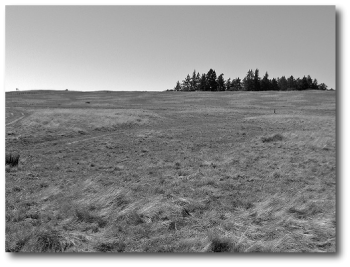
Image Source.
HAT-P-2b. The name doesn’t exactly ring of grandeur, but this planet — a product of Gáspár Bakos’ HAT Net transit survey — is poised to give the Spitzer Space Telescope its most dramatic glimpse to date of a hot Jupiter.
HAT-P-2b’s orbit is remarkably eccentric for a planet with an orbital period of only 5.6 days, and by a stroke of luck, periastron is located almost exactly midway between the primary and the secondary transits (as viewed from Earth). The strength of the stellar insolation at periastron is nine times as strong as at apastron, which more than guarantees that the planet will have disaster-movie-ready weather.
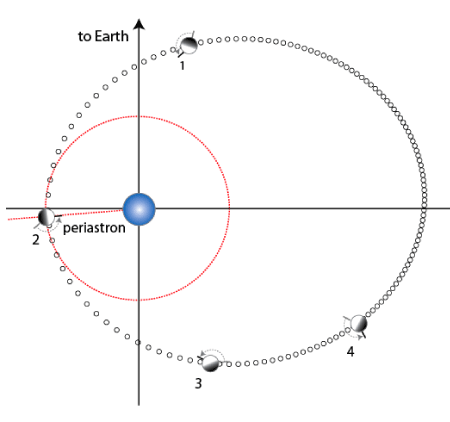
On June 6th, Josh Winn and his collaborators used the Keck telescope to obtain 97 radial velocities for HAT-P-2. The observations were timed to occur before, during, and after primary transit, and the Rossiter-McLaughlin effect is clearly visible in their data (preprint here):
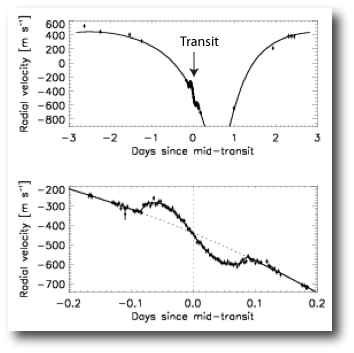
The symmetry of the Rossitered points indicates that the angular momentum vector of the planetary orbit is aligned with the spin pole of the star:
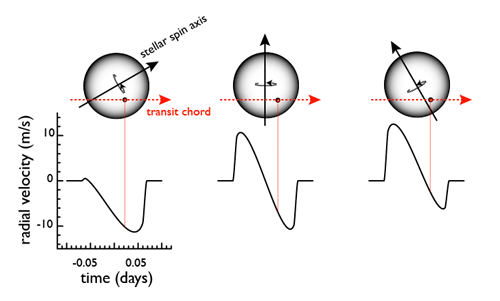
This state of affairs also holds true for the other transiting planets — HD 209458b, HD 149026b, HD 189733b — for which the effect has been measured. The observed alignments are evidence in favor of disk migration as the mechanism for producing hot Jupiters.
With its apparent magnitude of V=8.7, the HAT-P-2b parent star is roughly ten times brighter than the average planet-bearing star discovered in a wide-field transit survey. The star is bright enough, in fact, to have earned an entry in both the Henry Draper Catalog (HD 147506) and the Hipparcos Database (HIP 80076), but with its surface temperature of 6300K (F8 spectral type) it was too hot to have been a sure-fire “add” to the ongoing radial velocity surveys. Prior to this May, it had been entirely ignored in the astronomical literature (save a brief mention in this paper from 1969).
HAT-P-2’s intrisic brightness and its planet’s orbital geometry mean that in a relatively compact 34-hour observation, Spitzer can collect on the most interesting features of the orbit with high signal-to-noise. In particular, there is an excellent opportunity to measure the rate at which the day-side atmosphere heats up during the close approach to the star. The planet, in fact, presents such a remarkable situation that a block of Director’s Discretionary time was awarded so that the observations can be made during the current GO-4 cycle. They’ll be occurring soon.
Both HAT-P-2b and HD 80606 b will provide a crucial ground truth for extrasolar planetary climate simulations. Jonathan Langton’s current model, for example, predicts that that the temperatures on HAT-P-2b will range over more than 1000K. At the four times shown in the above orbital diagram, the hemisphere facing Earth is predicted to show the following appearances:
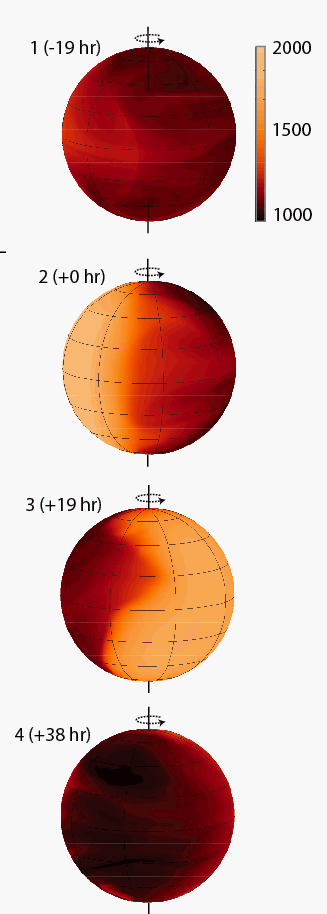
Spitzer, of course, can’t resolve the planetary disk. It measures the total amount of light coming from the planet in chosen passband. At 8-microns, the planet’s light curve should look like this:

The temperature maps only hint at the complex dynamics of the surface flow. A better indication is given by the distribution of vorticity,
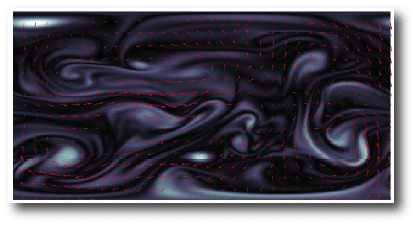
which we’ll pick up in the next post…

Pingback: systemic - Vorticity